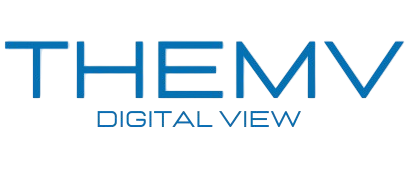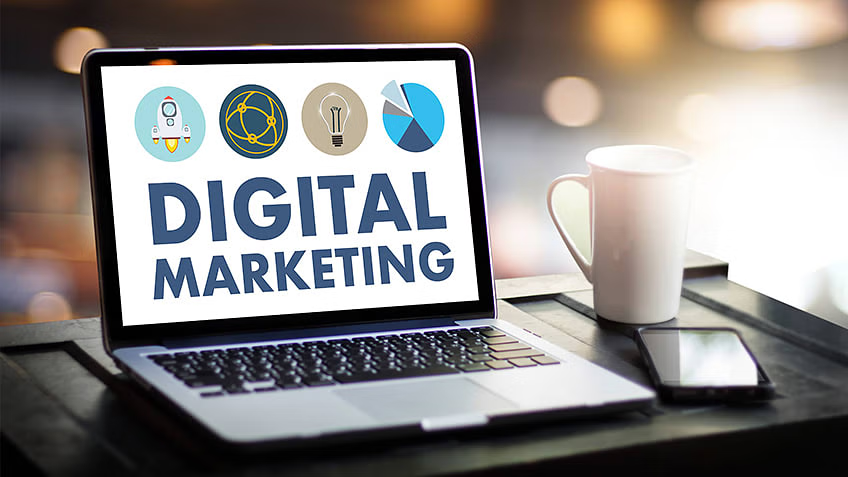Digital marketing has become a cornerstone of modern business strategy in today’s technology-driven world. Whether you’re a small business owner, a marketing professional, or a budding entrepreneur, understanding digital marketing is essential for achieving success in the online landscape. In this blog, we will explore digital marketing, its benefits, the different types of digital marketing, and actionable tips to maximize your efforts.
What is Digital Marketing?
Digital marketing refers to the use of online channels, tools, and strategies to promote products, services, or brands to a targeted audience. Unlike traditional marketing, which relies on offline mediums like television and print, digital marketing leverages the internet and electronic devices to connect businesses with potential customers.
Key components of digital marketing include search engines, social media, email, websites, and mobile applications. Its interactive nature allows businesses to engage directly with their audience, track performance, and make data-driven decisions.
Benefits of Digital Marketing
- Cost-Effectiveness Digital marketing is often more affordable than traditional marketing methods. With options like pay-per-click (PPC) advertising and organic social media marketing, businesses can optimize their budgets effectively.
- Targeted Reach Digital marketing enables precise targeting based on demographics, interests, and online behavior. This ensures your message reaches the right audience at the right time.
- Measurable Results Tools like Google Analytics and social media insights allow businesses to track key performance metrics (KPIs), such as website traffic, conversion rates, and ROI, in real time.
- Global Audience The internet breaks geographical barriers, allowing businesses to reach a global audience and expand their market.
- Improved Customer Engagement Through interactive content like polls, videos, and social media interactions, digital marketing fosters a deeper connection with the audience, enhancing brand loyalty.
- Flexibility and Scalability Digital marketing campaigns can be adjusted or scaled based on performance data, ensuring continuous improvement and efficiency.
Types of Digital Marketing
- Search Engine Optimization (SEO) SEO focuses on improving a website’s visibility on search engines like Google. By optimizing keywords, content, and technical elements, businesses can attract organic traffic and improve rankings.
- Content Marketing This involves creating and distributing valuable, relevant, and consistent content to attract and retain a clearly defined audience. Examples include blogs, videos, infographics, and eBooks.
- Social Media Marketing (SMM) SMM uses platforms like Facebook, Instagram, LinkedIn, and Twitter to engage with audiences, promote products, and build brand awareness.
- Pay-Per-Click Advertising (PPC) PPC is a model of digital advertising where businesses pay each time a user clicks on their ad. Platforms like Google Ads and Bing Ads are popular for running PPC campaigns.
- Email Marketing Email marketing involves sending personalized emails to prospects and customers to nurture relationships, promote products, and encourage loyalty.
- Affiliate Marketing In affiliate marketing, businesses reward affiliates (partners) for driving traffic or sales through their referral links.
- Influencer Marketing Partnering with influencers who have a strong following can help businesses gain credibility and reach a larger audience.
- Mobile Marketing focuses on reaching users through mobile-specific platforms like apps, SMS, and push notifications.
- Video Marketing Video content is highly engaging and is used across platforms like YouTube, TikTok, and Instagram to promote products and services.
Tips for Successful Digital Marketing
- Define Your Goals Clearly outline what you want to achieve with your digital marketing efforts, whether it’s brand awareness, lead generation, or increased sales.
- Understand Your Audience Use analytics tools and research to understand your audience’s preferences, behaviors, and pain points. Tailor your strategy accordingly.
- Optimize for Mobile Ensure your website and content are mobile-friendly, as a significant portion of online traffic comes from mobile devices.
- Leverage Data and Analytics Continuously track performance metrics and use data insights to refine your campaigns for better results.
- Create Quality Content Focus on creating high-value, engaging, and original content that addresses the needs of your audience.
- Stay Updated on Trends Digital marketing is constantly evolving. Stay informed about the latest trends and tools to remain competitive.
- Utilize Multiple Channels Don’t rely on a single platform. Diversify your efforts across various channels to maximize reach and engagement.
- Test and Experiment A/B testing different strategies, such as ad copy, visuals, and CTAs, can help identify what works best for your audience.
- Invest in Paid Advertising While organic growth is important, paid advertising can provide a significant boost to your campaigns.
- Engage with Your Audience Respond to comments, messages, and reviews to build trust and foster a sense of community around your brand.
Conclusion
Digital marketing is an essential tool for businesses in the digital age. With its diverse types, measurable benefits, and scalable strategies, it empowers businesses to connect with their audience like never before. By understanding the fundamentals and implementing effective tips, you can craft a digital marketing strategy that drives growth and ensures long-term success. Whether you’re just starting or looking to refine your existing efforts, now is the perfect time to embrace the power of digital marketing.


